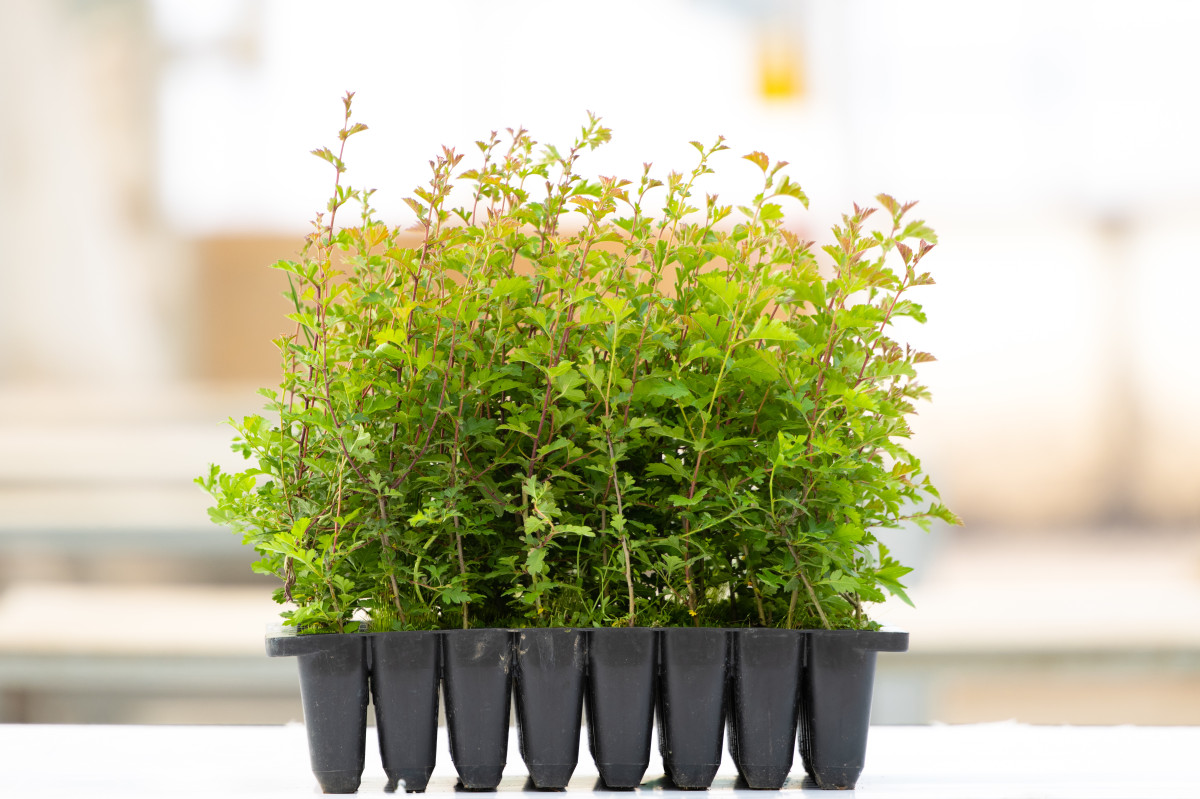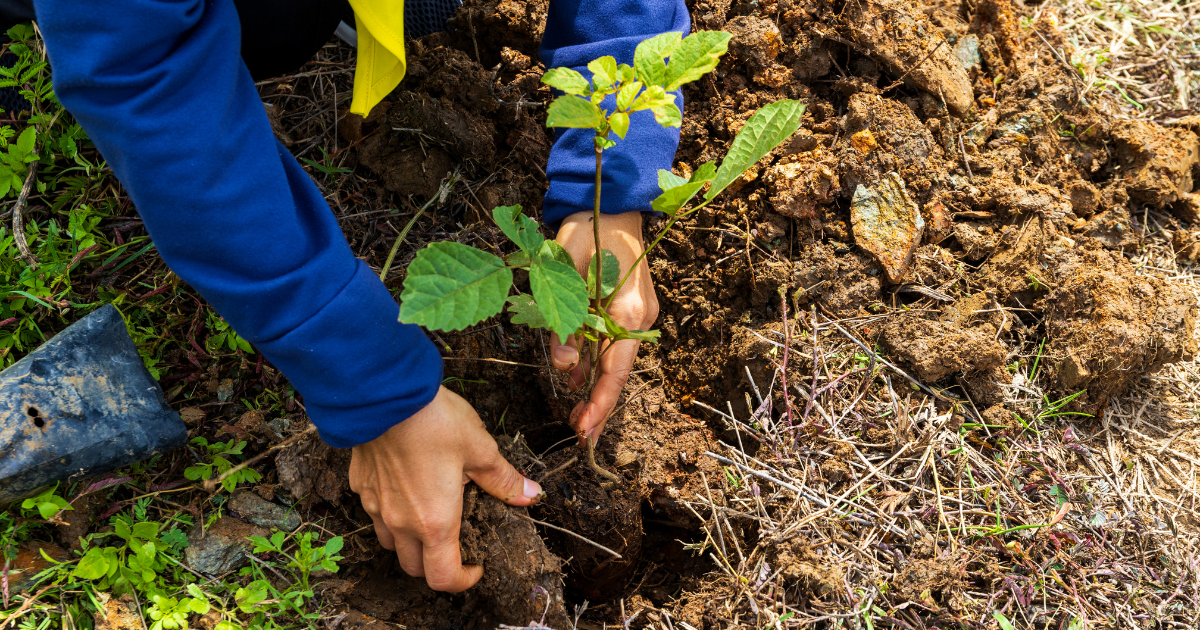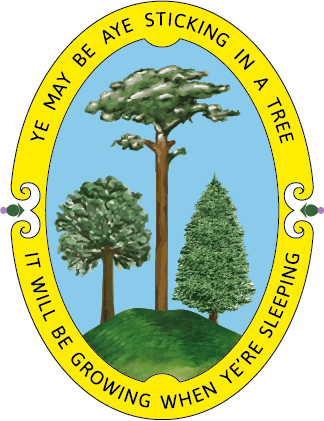Growing Green: The Case for Cell-Grown Trees in 2024
Introduction
Here at Alba Trees we are specialists in cell-grown plants. We are the UK's largest producer of cell grown trees, providing the market with over 30 million trees per year. We are constantly expanding our business year-on-year to ensure we meet the ever-growing industry demands for trees to fight climate change and preserve biodiversity. Galbraith Group, one of our biggest clients, use our cell grown stock for a number of their projects from rewilding to afforestation.
What are the benefits of cell grown trees?
Cell grown trees have many benefits including stronger roots, all year round planting, more disease resilient, higher establishment rates, drought tolerant, easier to transport and are more environmentally conscious.
As cell grown trees are grown in small individual containers they are grown in are specially designed to eliminate root-spiralling and offer substantial benefits to the establishment and growing on of the plants.
.png)
In this Alba Trees blog, we'll explore the revolutionary concept of cell-grown trees and why they represent the future of arboriculture. From their environmental benefits to their practical applications, join us as we make the case for why cell-grown trees are the best choice for a greener planet.
Redefining Reforestation
Traditional methods of tree cultivation often involve transplanting seedlings from nurseries to their final planting location, a process that can be time-consuming and resource-intensive. Cell-grown trees, however, are propagated using advanced techniques that allow for the efficient production of healthy, uniform specimens in controlled environments. By bypassing these logistical challenges, cell-grown trees offer a more streamlined approach to reforestation, enabling faster growth rates and higher survival rates in the wild.
Environmental Benefits
One of the key advantages of cell-grown trees is their reduced environmental impact compared to traditional cultivation methods. Because they are grown in controlled environments, cell-grown trees require fewer resources such as water, fertilizer, and pesticides. Additionally, their uniform size and shape make them ideal for urban forestry projects, where space constraints and aesthetic considerations are paramount. By minimising the ecological footprint of tree cultivation, cell-grown trees help to conserve natural resources and promote biodiversity in urban and rural landscapes alike.
Adaptability and Resilience
Another benefit of cell-grown trees is their adaptability and resilience to environmental stressors. By selecting for desirable traits such as disease resistance, drought tolerance, and rapid growth, growers can produce trees that are better equipped to thrive in a variety of conditions. Our cell grown trees are sturdy and robust to withstand handling and transit, though must be handled with a little care to ensure root plugs stay intact. Keeping the stock sheltered before planting is crucial to prevent freezing or overheating, and trees should not be stored in the dark for long periods of time.

One of the primary benefits of cell-grown stock is the lack of root disturbance, bare root trees will lose a proportion of root in the lifting process and will take time to regrow a root system. During the planting process some of the long straggly root systems will fall victim to a sharpened spade, this initial root damage can mean that in warmer periods, bare root trees can die under stress if they have not managed to grow back a sufficient root system.
By contrast, cell grown trees have a robust root system contained within the plug, meaning they are much less prone to transplanting shock. Working with cell-grown stock gives much greater flexibility around planting times. As cell-grown trees can be supplied in a growing phase through spring, summer and autumn, there will be root activity within the plug which allows trees to get established before the onset of winter.
This resilience is especially important in the face of climate change, which is expected to increase the frequency and severity of extreme weather events. By planting cell-grown trees, communities can bolster their resilience to climate change and enhance the long-term health and vitality of their urban forests.
Practical Applications
From urban parks and green spaces to highway medians and commercial developments, cell-grown trees offer a versatile solution for a wide range of landscaping projects. Because they are grown in cells, cell-grown trees can be planted year-round, allowing for greater flexibility in scheduling and implementation. Our trees are grown in deep cell trays which can be safely graded and despatched from our nursery all year round without damage to the roots. They can also be planted out with the traditional planting season. Cell grown plants are available and can be planted 12 months of the year – which is of particular benefit in summer and autumn, in the period before bare root trees have gone dormant and can be lifted.

Due to the high establishment percentage of cell grown trees, planters can reduce their costs by not needing to replant as often. Increasing their overall efficiency while planting the best quality trees possible . They are also easy to plant due to the minimal ground cultivation needed for planting. If planting gets delayed by weather or other factors, cell grown stock can be held for several weeks without problems provided the roots are kept moist and don’t dry out. Additionally, their compact size and lightweight nature make them easier to transport and plant than traditional bare-root trees. Whether adding greenery to city streets or restoring degraded landscapes, cell-grown trees are a cost-effective and efficient choice for sustainable tree planting initiatives.
Impact on climate change
Tree planting is currently at the forefront of government thinking, and the Scottish Government continues to increase annual targets for tree planting. Their 2020/21 planting target has increased to 12,000 hectares, an increase of 800 hectares on 2019 figures. In 2019 84% of all new UK planting happened in Scotland. Alba is working closely with the wider industry and the government to meet those targets. Cell grown trees can often be produced more quickly than traditional bare root growing – meaning we can bring more trees to market more quickly to match industry needs.
Conclusion
As we've seen, cell-grown trees offer a host of benefits that make them an attractive option for reforestation and landscaping projects. From their reduced environmental impact to their adaptability and practicality, cell-grown trees represent a greener, more sustainable approach to tree cultivation. By embracing this innovative technology, we can create healthier, more resilient urban forests and contribute to the preservation of our planet for future generations to enjoy.










